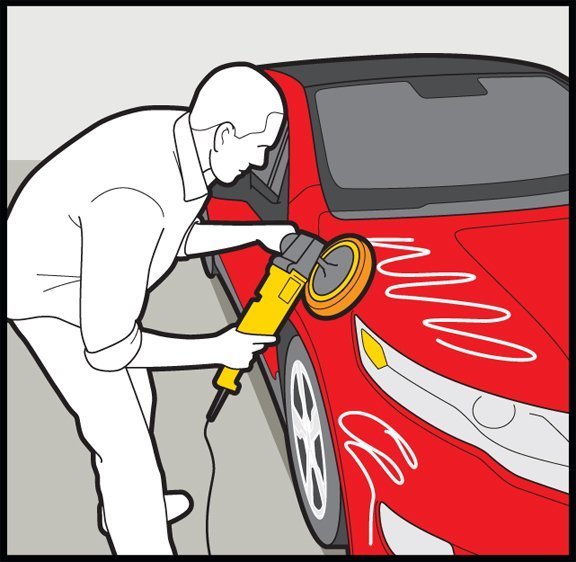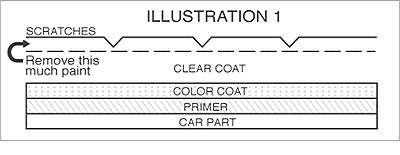
Many people believe that cars come off the assembly line with perfect paint. That's far from the case. There are many conditions that cause minor paint flaws requiring additional finishing work. Dust nibs (small particles that land in the paint while it is still wet) are a good example. Most car manufacturers take care of these problems at the factory using abrasive finishing materials. Sometimes it is the car dealer who recognizes the flaw and fixes it.
Repairing minor paint flaws through polishing is not harmful to the paint system unless you remove too much paint. If more than 50% of the clearcoat finish is removed, you stand a good chance of premature paint system failure. If more than 75% of the clearcoat finish is removed, you will experience immediate paint system failure. It can be a very fine dance between success and failure.
Here's a general rule to follow. If a scratch or other flaw can be felt with your fingernail, it's too deep to be completely removed through polishing. That's not to say that polishing won't help hide the flaw; it will. Take a look at the following 3M diagram showing paint layers and minor scratches (marring) in the clearcoat surface. These scratches can be removed completely through polishing, because more than 50% of the clearcoat would remain.

Non-clearcoat finishes have the same basic rules.You should not remove more than 50% of the top coat (color coat) finish when repairing a scratch or other paint flaws.
It is important to understand how a polish can be used to "hide" scratches and other micro marring.In the two diagrams above, you can see that the scratches have hard edges that run at a 30 to 60 degree downward slope. It is the hard edge and angle of a scratch that creates a perfect opportunity for light reflection. It is this reflection that enhances the visibility of the scratch. A good polish rounds the edges of scratches, reducing reflection.
Jump up^ http://www.autopia-carcare.com/reasons-to-polish-car1.html#